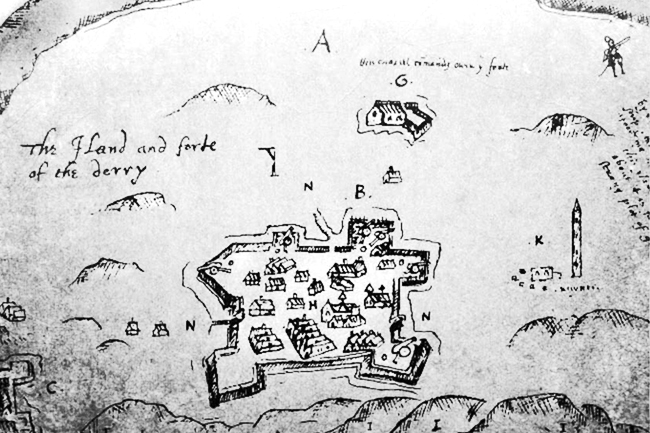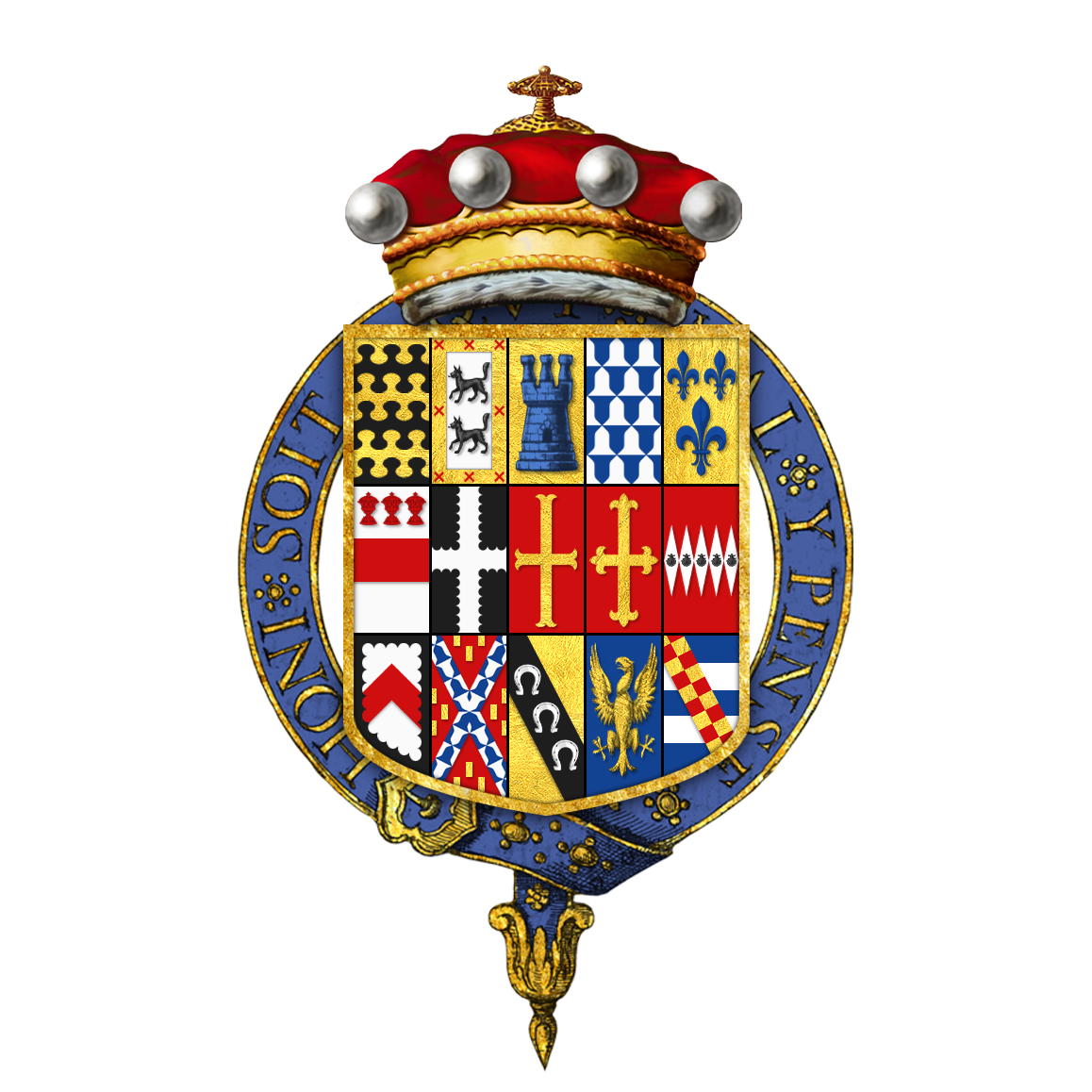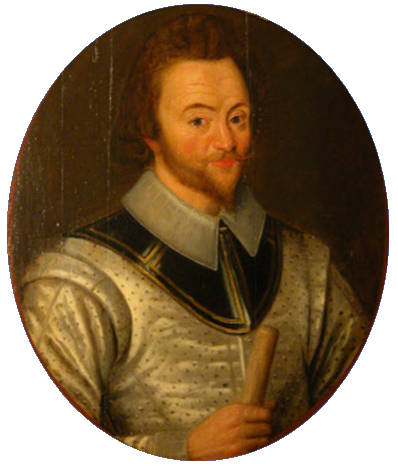|
Nine Years War (Ireland)
The Nine Years' War, sometimes called Tyrone's Rebellion, took place in Ireland from 1593 to 1603. It was fought between an Irish alliance—led mainly by Hugh O'Neill of Tyrone and Hugh Roe O'Donnell of Tyrconnell—against English rule in Ireland, and was a response to the ongoing Tudor conquest of Ireland. The war was fought in all parts of the country, but mainly in the northern province of Ulster. The Irish alliance won some important early victories, such as the Battle of Clontibret (1595) and the Battle of the Yellow Ford (1598), but the English won a victory against the alliance and their Spanish allies in the siege of Kinsale (1601–02). The war ended with the Treaty of Mellifont (1603). Many of the defeated northern lords left Ireland to seek support for a new uprising in the Flight of the Earls (1607), never to return. This marked the end of Gaelic Ireland and led to the Plantation of Ulster. The war against O'Neill and his allies was the largest conflict fough ... [...More Info...] [...Related Items...] OR: [Wikipedia] [Google] [Baidu] |
Tudor Conquest Of Ireland
The Tudor conquest (or reconquest) of Ireland took place under the Tudor dynasty, which held the Kingdom of England during the 16th century. Following a failed rebellion against the crown by Silken Thomas, the Earl of Kildare, in the 1530s, Henry VIII was declared King of Ireland in 1542 by statute of the Parliament of Ireland, with the aim of restoring such central authority as had been lost throughout the country during the previous two centuries. Several people who helped establish the Plantations of Ireland also played a part later in the early colonisation of North America, particularly a group known as the West Country men.Taylor, pp. 119,123 Despite support from the Spanish Empire during the Anglo-Spanish War (1585–1604), by 1603 the entire country was subject to English rule, exercised through the Privy Council of Ireland. It resulted in the imposition of English law, language and culture, the confiscation and redistribution of monastic lands, while the Protestant ... [...More Info...] [...Related Items...] OR: [Wikipedia] [Google] [Baidu] |
Martín De Padilla Y Manrique, 1st Count Of Santa Gadea
Martín de Padilla y Manrique, 1st Count of Santa Gadea, '' Adelantado of Castile'' ( Calatañazor, present-day Castile and León, 1540 – El Puerto de Santa María, 1602), secretary of state and war of Philip II of Spain, was a Spanish Admiral during the Anglo–Spanish War (1585–1604), French Wars of Religion and the Eighty Years' War. His most notable naval engagements included the Spanish Armada, battle with the Counter Armada and the Battle of the Gulf of Almería (1591) The Battle of the Gulf of Almería, also known as the Battle of Almería Bay or the Battle of Cape of Palos, was a naval Spanish victory that took place in late August, 1591, off Almería, near the Cape Palos, during the Eighty Years' War and .... Padilla commanded a squadron of galleys that sank four cargo vessels from the English Armada off Lisbon in 1589. References External linksDon Martín de Padilla y Manrique, Count of Santa Gadea {{DEFAULTSORT:Padilla y Manrique, Martin, 1st Count of ... [...More Info...] [...Related Items...] OR: [Wikipedia] [Google] [Baidu] |
Niall Garve O'Donnell
Niall Garve O'Donnell ( ga, Niall Garbh Ó Domhnaill; 1569 – 1626) was an Irish chieftain, alternately an ally of and rebel against English rule in Ireland. He is best known for siding with the English against his kinsman Hugh Roe O'Donnell during the Nine Years' War in the 1590s. Overview He was the son of Conn O'Donnell, the son of Calvagh O'Donnell the ruler of the lordship of Tyrconnell. Amongst his brothers were Hugh Boy, Donal and Conn. Niall Garbh was incensed at the elevation of his cousin Hugh Roe (Red Hugh) to the chieftainship in 1592, was further alienated when the latter deprived him of his castle of Lifford, and a bitter feud between the two O'Donnells was the result. While Red Hugh O'Donnell was engaged in the Nine Years' War against the English, Niall Garve exploited the political situation to his own advantage. Niall Garve made terms with the English government, to whom he rendered valuable service both against the O'Neills and against his cousin, enabl ... [...More Info...] [...Related Items...] OR: [Wikipedia] [Google] [Baidu] |
Arthur Chichester, 1st Baron Chichester
Arthur Chichester, 1st Baron Chichester (May 1563 – 19 February 1625; known between 1596 and 1613 as Sir Arthur Chichester), of Carrickfergus in Ireland, was an English administrator and soldier who served as Lord Deputy of Ireland from 1605 to 1616. He was instrumental in the development and expansion of Belfast, now Northern Ireland's capital. Several streets are named in honour of himself and his nephew and heir Arthur Chichester, 1st Earl of Donegall, including Chichester Street and the adjoining Donegall Place, site of the Belfast City Hall. Origins Arthur Chichester was the second son of Sir John Chichester (d.1569), of Raleigh, Pilton, in North Devon, a leading member of the Devonshire gentry, a naval captain, and ardent Protestant who served as Sheriff of Devon in 1550–1551, and as Knight of the Shire for Devon in 1547, April 1554, and 1563, and as Member of Parliament for Barnstaple in 1559. Arthur's mother was Gertrude Courtenay, a daughter of Sir William Co ... [...More Info...] [...Related Items...] OR: [Wikipedia] [Google] [Baidu] |
Henry Docwra, 1st Baron Docwra Of Culmore
Henry Docwra, 1st Baron Docwra of Culmore (1564 – 18 April 1631) was a leading English-born soldier and statesman in early seventeenth-century Ireland. He is often called "the founder of Derry", due to his role in establishing the city. Background He was born at Chamberhouse Castle, Crookham, near Thatcham, Berkshire, into a minor gentry family, the Docwras (there are several variant spellings of the name, including Dockwra and Dowkra), who came originally from Yorkshire.McGurk, John ''Sir Henry Docwra 1564–1631 – Derry's Second Founder'' Four Courts Press Dublin 2007, pp.18-26 He was (as far as is known) the only surviving son of Edmund Docwra MP and his wife Dorothy Golding, daughter of John Golding of Halstead, Essex, and sister of the noted translator Arthur Golding. His father was a prominent local politician, who sat in the House of Commons as MP for Aylesbury in the Parliament of 1571, and for New Windsor in that of 1572. He was later obliged by financial diff ... [...More Info...] [...Related Items...] OR: [Wikipedia] [Google] [Baidu] |
George Carew, 1st Earl Of Totnes
George may refer to: People * George (given name) * George (surname) * George (singer), American-Canadian singer George Nozuka, known by the mononym George * George Washington, First President of the United States * George W. Bush, 43rd President of the United States * George H. W. Bush, 41st President of the United States * George V, King of Great Britain, Ireland, the British Dominions and Emperor of India from 1910-1936 * George VI, King of Great Britain, Ireland, the British Dominions and Emperor of India from 1936-1952 * Prince George of Wales * George Papagheorghe also known as Jorge / GEØRGE * George, stage name of Giorgio Moroder * George Harrison, an English musician and singer-songwriter Places South Africa * George, Western Cape ** George Airport United States * George, Iowa * George, Missouri * George, Washington * George County, Mississippi * George Air Force Base, a former U.S. Air Force base located in California Characters * George (Peppa Pig), a 2-year-old p ... [...More Info...] [...Related Items...] OR: [Wikipedia] [Google] [Baidu] |
Thomas Norreys
Sir Thomas Norris (1556–1599) was an English soldier. He sat in the Irish House of Commons, and was made Lord President of Munster in Ireland. His last name is sometimes spelt Norreys. Family He was the fifth son of Henry Norris, 1st Baron Norreys, of Rycote House and Wytham Abbey in Oxfordshire (the latter previously in Berkshire), and his wife, Margery, the youngest daughter of John Williams, 1st Baron Williams of Thame. He matriculated at Magdalen College, Oxford, in 1571, aged 15, graduating Bachelor of Arts on 6 April 1576. Sir John Norris, and Sir Edward Norris were his brothers. He married Bridget, daughter of Sir William Kingsmill of Sydmonton Court in Hampshire and Bridget Raleigh, by whom he had one daughter, Elizabeth, his sole heiress, who married Sir John Jephson of Froyle in Hampshire. She died in 1624, to her husband's intense grief. Their son William Jephson sat in the Long Parliament. Norreys built Mallow Castle, which remained in his daughter's ... [...More Info...] [...Related Items...] OR: [Wikipedia] [Google] [Baidu] |
Charles Blount, 8th Baron Mountjoy
Charles Blount, 1st Earl of Devonshire, KG (pronounced ''Blunt''; 15633 April 1606) was an English nobleman and soldier who served as Lord Deputy of Ireland under Queen Elizabeth I, and later as Lord Lieutenant of Ireland under King James I. He succeeded to the family title as 8th Baron Mountjoy in 1594, before commanding the Crown's forces during the final years of Tyrone's Rebellion. He was able to defeat Tyrone at the Battle of Kinsale, and captured his headquarters at Dungannon before peace was agreed at the Treaty of Mellifont in 1603. Early life The second son of James, 6th Baron Mountjoy and Catherine, only daughter of Sir Thomas Leigh (Commissioner for Suppression of the Monasteries), Charles Blount was among the most distinguished of the family, succeeding as 8th Baron Mountjoy on the death of his unmarried elder brother William, 7th Baron Mountjoy. The good fortune of his youthful and handsome looks found favour with Queen Elizabeth I which aroused the jea ... [...More Info...] [...Related Items...] OR: [Wikipedia] [Google] [Baidu] |
Robert Devereux, 2nd Earl Of Essex
Robert Devereux, 2nd Earl of Essex, KG, PC (; 10 November 1565 – 25 February 1601) was an English nobleman and a favourite of Queen Elizabeth I. Politically ambitious, and a committed general, he was placed under house arrest following a poor campaign in Ireland during the Nine Years' War in 1599. In 1601, he led an abortive ''coup d'état'' against the government of Elizabeth I and was executed for treason. Early life Devereux was born on 10 November 1565 at Netherwood near Bromyard, in Herefordshire, the son of Walter Devereux, 1st Earl of Essex, and Lettice Knollys. His maternal great-grandmother Mary Boleyn was a sister of Anne Boleyn, the mother of Queen Elizabeth I, making him a first-cousin-twice-removed of the Queen. He was brought up on his father's estates at Chartley Castle, Staffordshire, and at Lamphey, Pembrokeshire, in Wales. His father died in 1576, and the new Earl of Essex became a ward of Lord William Cecil of Burghley House. In 1577, he was admitt ... [...More Info...] [...Related Items...] OR: [Wikipedia] [Google] [Baidu] |
William Russell, 1st Baron Russell Of Thornhaugh
William Russell, 1st Baron Russell of Thornhaugh (died 9 August 1613) was an English nobleman, politician, peer, and knight. He was the younger son of Francis Russell, 2nd Earl of Bedford and his first wife Margaret St. John. His birthdate is uncertain, with some records showing that he was born as early as 1553, some as late as 1563. He was educated at Magdalen College, Oxford. After spending a few years abroad, he went to Ireland in 1580, and having seen some service in that country, he was knighted in September 1581. Russell began his active military career in the Netherlands in 1585, being made lieutenant-general of cavalry. In September 1586 he distinguished himself at the Battle of Zutphen and was noted for maintaining an effective fighting force in difficult circumstances. He was appointed to the office of Governor of Flushing in 1587, but was recalled on his own initiative the following year. In 1594 he was appointed to the office of Lord Deputy of Ireland, where he served ... [...More Info...] [...Related Items...] OR: [Wikipedia] [Google] [Baidu] |
John Norris (soldier)
Sir John Norris or ''Norreys'' (''ca.'' 1547 – 3 September 1597), of Rycote, Oxfordshire, and of Yattendon and Notley in Berkshire, was an English soldier, the son of Henry Norris, 1st Baron Norreys, a lifelong friend of Queen Elizabeth. The most acclaimed English soldier of his day, Norreys participated in every Elizabethan theatre of war: in the Wars of Religion in France, in Flanders during the Eighty Years' War of Dutch liberation from Spain, in the Anglo-Spanish War, and above all in the Tudor conquest of Ireland. Early life The eldest son of Henry Norreys by his marriage to Marjorie Williams, Norreys was born at Yattendon Castle. His paternal grandfather had been executed after being found guilty of adultery with Queen Anne Boleyn, the mother of Queen Elizabeth. His maternal grandfather was John Williams, Lord Williams of Thame. Norreys' great uncle had been a guardian of the young Elizabeth, who was well acquainted with the family. She had stayed at Yattendon Cast ... [...More Info...] [...Related Items...] OR: [Wikipedia] [Google] [Baidu] |
Henry Bagenal
Sir Henry Bagenal PC (c. 1556 – 14 August 1598) was marshal of the Royal Irish Army during the reign of Queen Elizabeth I. Life He was the eldest son of Nicholas Bagenal and Eleanor Griffith, daughter of Sir Edward Griffith of Penrhyn. His brother was Dudley Bagenal. Bagenal probably matriculated from Jesus College, Oxford when he was 16 (in 1572 or 1573), but left without taking a degree in order to join his father Sir Nicholas who was then marshal of the army in Ireland. In May 1577, Sir Nicholas was appointed chief commissioner of Ulster, with Henry as his assistant. Bagenal was himself knighted in 1578. He was involved in some military disasters, such as a defeat at Glenmalure on 25 August 1580 when Lord Grey led the troops (with Bagenal one of the commanders of the rear) into battle with Fiach McHugh O'Byrne and Viscount Baltinglass in the Wicklow mountain passes. In 1584, Bagenal was colonel of the garrison at Carrickfergus when 1,300 of Sorley Boy MacDonnell's Scots ... [...More Info...] [...Related Items...] OR: [Wikipedia] [Google] [Baidu] |




